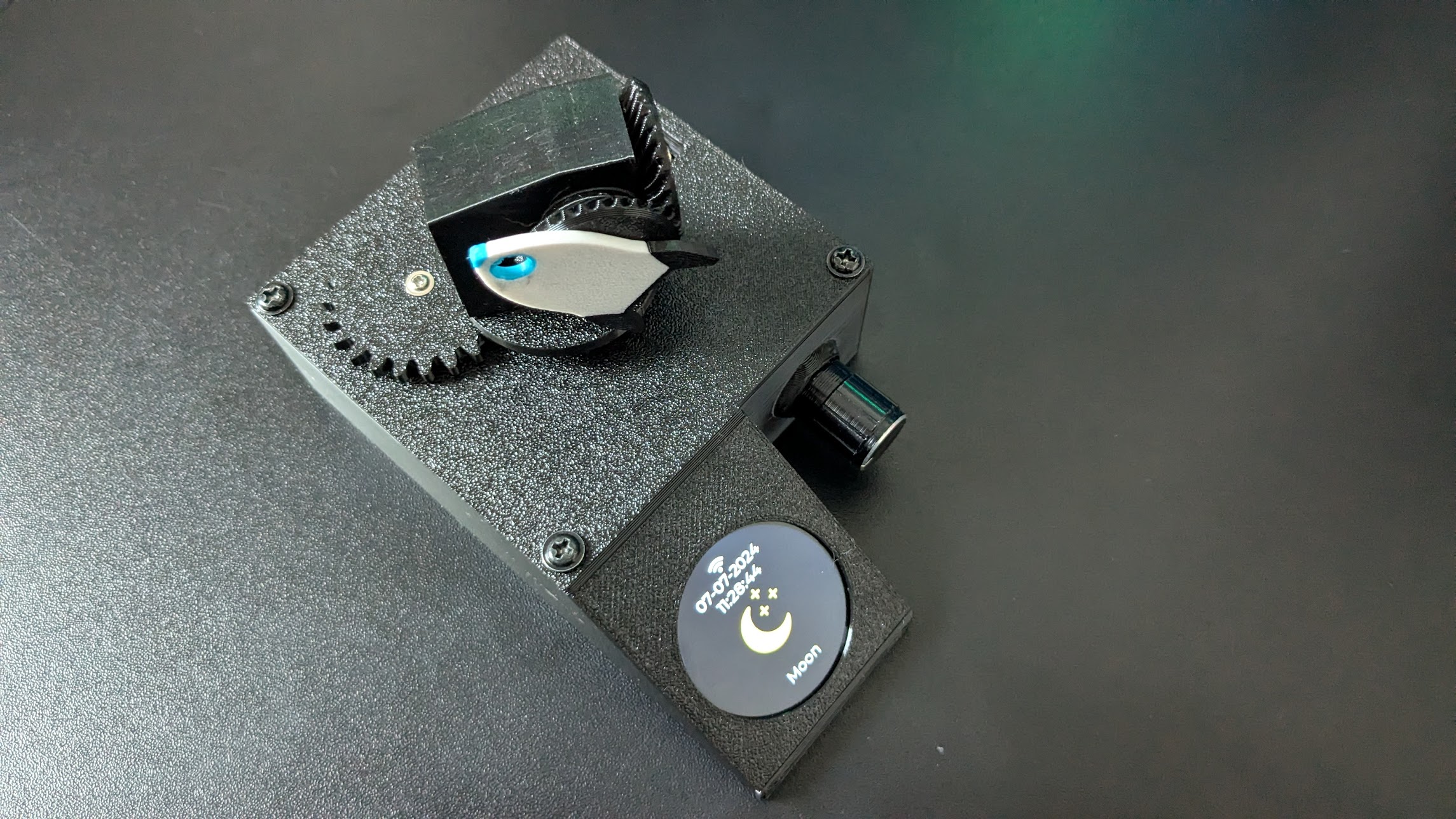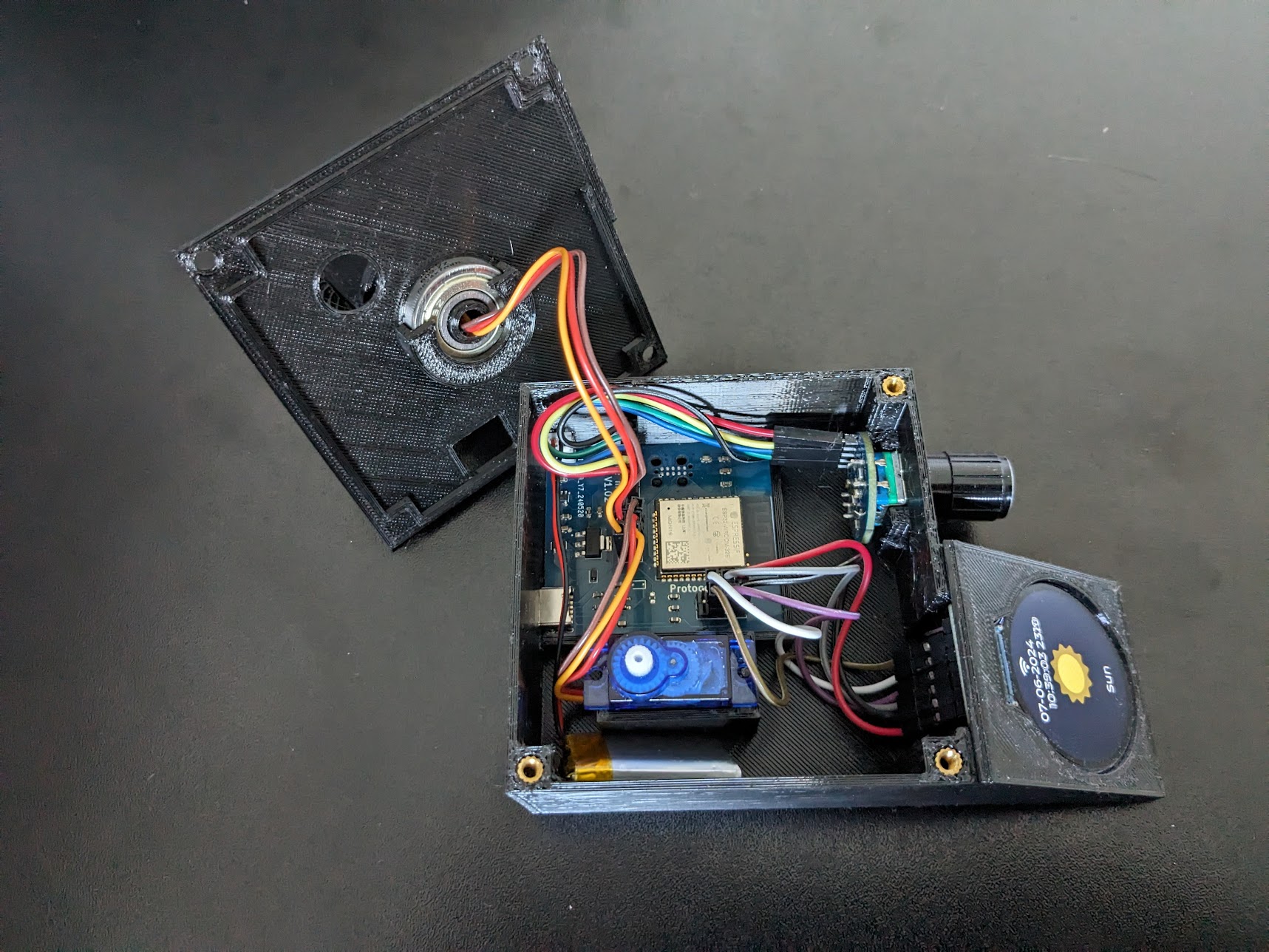Lately I've been working hard on a new project: the Space Monitor. With this innovative tool you can easily point to different celestial objects and immediately see where they are relative to your location. The rocket continuously follows the selected object, so you always know exactly where to look.

Currently, this project is still in development and is only able to determine the sun and moon based on your current location, date and time. Eventually, other spatial objects will be added such as the planets in our solar system and the International Space Station.
Space has always fascinated me, which led me to develop the Space Monitor to give everyone, from amateur astronomers to curious stargazers, the opportunity to explore the wonders of the universe in a fun and easy way.
Current features
Wifi connectivity
Automatic date and time retrieval
Wifi easy connect
Android version 10 and higher support WiFi easy connect. This allows you to add the device to a WiFi network by scanning a QR code without having to enter the wifi credentials manually.
Access point
The built-in access point allows you to set up the device quickly and easily using an internal web server. As soon as the Access point is active, you can connect to the Space Monitor via a mobile device.
Configuration
Manual configuration
The Space Monitor is easy to configure using a rotary knob and a display on which you can navigate through a menu.
Website
Configuration is also possible via a built-in web server. This hosts a website on which the Space Monitor can be fully configured.
Rechargable battery
The Space Monitor is equipped with a rechargeable battery, designed to give you long and uninterrupted observation sessions. This battery gives you the freedom to take your Space Monitor anywhere without having to worry about power.
Scheduled for development
Firmware updates
Receiving remote updates via WiFi to improve performance and functionality.
User interface improvements
An even more user-friendly interface for an optimal user experience. This allows the user to easily navigate through the menu and easily view information about the current tracking space object.
Addition of celestial objects
Expansion of the selection of celestial objects. This includes the planets in our current solar system (including: Mars/Jupiter/Saturn) and the international space station.
Current weather
Weather information integration to show the weather conditions of the user's location.
Simulation and prediction
Position predictions of celestial objects over a period of time in the future. This can, for example, show how a celestial object will move in the next 24 hours.
Reduce power consumption
More efficient energy use for longer observation sessions without interruption.
The Space Monitor is not finished with developments yet! In the near future you can expect a follow-up blog in which you can read about the developments and new functions.

